You know, starting your own fuel delivery business is a pretty smart move these days.
We’re living in a world where convenience is king, And with mobile fuel delivery services booming, it seems like the perfect moment to jump into this growing market.
Whether you’re dreaming of being your boss or you’re already running a fuel delivery business and thinking of adding something new, diving into fuel delivery could be a profitable venture.
But, you might be wondering, how to start a fuel delivery business for startups & businesses.
Well, in this blog, we’re gonna break it down for you. We’ll cover all the essentials you need to know to start a fuel delivery business in 2025 from the ground up.
From the basics of how this industry works to tips on starting a successful fuel delivery business, we’ve got all that info for you! So, let’s get started!
What is a Fuel Delivery Business?
Before diving deeper, we are going to talk about “What is On-Demand Fuel Delivery Business”.
So, you see a fuel delivery business is most likely the best option for convenience. Such businesses deliver fuel right to your doorstep or anywhere be it at work or even if you're on the road.
It means no longer having to drive to a gas station!
Now all you have to do is whip out your mobile phone, order your fuel through an app, and it is brought right to you.
It's catching on fast, especially among busy folks like professionals, remote workers, truck drivers, and fleet managers who, let’s be honest, often don’t have the time (or sometimes the chance) to make a pit stop at the station.
And the best part? Mobile fuel delivery businesses make it all much easier for you.
Well, everything has been made possible through a fuel delivery business which means you track your delivery and payments on the go, absolute convenience at its finest.
Indeed, if you are thinking about how to start a fuel delivery business in 2025, now is just the right time to plunge into it.
The push for on-demand service is growing and the fuel delivery business is a perfect model to position for success.
Joining this trend can lead to stepping into a market that will grow long-term. So, it is worth considering starting a successful fuel delivery business in 2025!
How Does a Fuel Delivery Business Work?
Now that we understand what a fuel delivery business is and why it’s a great idea, let’s take a look at how it works in practice.
It’s no rocket science, the process is quite simple, but efficiency is a requirement to make it run smoothly.
If you are planning to start a fuel delivery business, knowing it’s working is important. So, here it is:
-
In this case, a fuel delivery company employs a mobile application to manage its operations.
-
The customer opens the app and enters their location, fuel type, and amount needed. The app provides an estimate of the delivery time and cost.
-
Once the customer confirms the details, the payment is processed via the app. Some apps also offer subscription services for regular deliveries.
-
After payment is confirmed, the app notifies a nearby driver who heads to the designated location with the required amount of fuel.
-
The delivery driver arrives at the customer’s location, refuels their vehicle or machinery, and completes the job. Once the delivery is finished, the customer rates the service via the app, and the transaction is closed.
Market Stats of Growing On-Demand Fuel Delivery Business
If you are starting a fuel delivery business, it is best to know about the market a little bit before jumping on the bandwagon.
-
North America is projected to dominate the market, accounting for over 40% of global revenue with an estimated market size of USD 100.48 million in 2024, and is expected to grow at a compound annual growth rate (CAGR) of 16.4% from 2024 to 2031.
-
Meanwhile, Europe is anticipated to hold more than 30% of the global market share, with a valuation of USD 75.36 million.
-
Asia Pacific has a market share of 23% of global revenue, and Latin America has more than 5%. Whereas, the Middle East and Africa have the majority of the market around 17.9% of the total revenue.
With billions and millions pouring into the market, it seems the right time to start a fuel delivery business for a startup or even a well-established business.
Still Confused? Let us give you more reasons.
Is 2025 the Right Time to Launch a Fuel Delivery Business?
The short answer is yes.
Why should you invest in a fuel delivery business is a huge consideration much bigger than knowing how to start a fuel delivery business in 2025. After all, it takes a lot of resources, effort, and most importantly money.
So, let’s give you some solid reasons:
1. High-Demand
First of all, it is a growing trend.
People always need fuel. Whether it is for cars, trucks or machinery fuel is a constant need.
Offering a delivery service ensures that your customers have access to fuel whenever and wherever they need it.
2. People Love Convenience
Yes, this is another reason for you to start a successful fuel delivery business.
In today’s world, everyone is looking for ways to save time and make life easier. Fuel delivery taps into this demand for convenience, making it a highly desirable service.
3. Opportunity to Scale
With the rapidly growing market.
Fuel Delivery businesses can grow quickly, especially when you scale your operations geographically or by adding different fuel types.
This business model is flexible and adaptable, so you can scale your business as demand increases.
4. Has Huge Potential
The cost to make a fuel delivery app may seem steep initially, but the return on investment is actually great.
Not many apps have tapped into this opportunity, which makes starting a fuel delivery business a great idea especially when the need for on-demand services continues to rise.
5. Less Competition
While the fuel industry itself is so competitive, the fuel delivery business is still relatively new, especially with the rise of mobile apps for fuel delivery.
Consider yourself in a stroke of great luck, as this gives you the opportunity to carve out a niche in a growing market.
Fuel Delivery App vs Fuel Delivery Business: What’s the Real Difference?
When exploring how to start a fuel delivery business? It is worth asking, “Are the fuel delivery apps and fuel delivery businesses the same thing?”.
Well, there’s a slight difference between simply running a fuel delivery app and building a full-fledged fuel delivery business.
On the surface, both may seem like the same thing-delivering fuel to customers- but the operational realities, infrastructure, and responsibilities are far from identical.
So, let’s break it down to see what each model entails and help you decide the best route for your business ambitions.
|
Aspect |
Fuel Delivery App |
Fuel Delivery Business |
|
Business Model |
A platform connecting customers to service providers (third-party vendors). |
A full-scale business that owns and operates the infrastructure for fuel delivery. |
|
Technology Focus |
Primarily a tech-based solution, managing bookings, payments, and customer service. |
More focused on managing logistics, fleet, operations, and compliance. |
|
Infrastructure |
Relies on third-party vendors for physical infrastructure (e.g., trucks, storage tanks). |
Owns or leases all infrastructure required (e.g., fuel trucks, storage facilities). |
|
Ownership of Assets |
Does not own delivery vehicles or equipment; just connects customers with providers. |
Owns delivery vehicles, fuel inventory, and related equipment. |
|
Scalability |
Easier to scale by adding more delivery partners to the platform. |
Scaling requires investing in more vehicles, hiring staff, and expanding operations. |
|
Operational Complexity |
Lower operational complexity as most tasks are outsourced to service providers. |
Higher operational complexity with responsibilities in fleet management, fuel procurement, and safety protocols. |
|
Regulatory Responsibility |
Limited responsibility for regulatory compliance (mainly related to app functionality). |
Full responsibility for regulatory compliance (fuel handling, transportation, environmental safety). |
|
Profit Model |
Typically earns revenue through commission from service providers or subscription fees. |
Makes money directly from fuel sales and service charges, plus operational costs. |
How to Start a Fuel Delivery Business? Step-By-Step Guide
Starting your own fuel delivery business? Yeah, it can feel a bit overwhelming at first.
But, if you break it down into smaller steps, it’s totally manageable. Let’s dive into a straightforward guide that'll help you start a fuel delivery business from scratch.
Step 1: Research and Understand the Market
Okay, first things first-you really need to get a grasp on the market you’re stepping into.
Who’s your target audience? What do they actually need? And what’s gonna set you apart from other fuel businesses?
Plus, don’t forget to look into the local laws and licensing because that can vary a lot depending on where you are.
Key Considerations:
- How much demand is there for fuel delivery services around you?
- Who are your competitors? And how can you stand out?
- What are the local safety and environmental rules you gotta follow?
- What’s bugging the customers they want fuel delivered right when they need it, or are they more into regular delivery schedules?
Step 2: Choose Your Business Model
Now, you’ve got a few different models to think about when starting an on-demand fuel delivery business:
- On-Demand Services: This is where customers order fuel as they need it. It’s super popular since people these days love that instant satisfaction.
- Subscription Services: Here, customers can sign up for regular deliveries, like every week or month. This could work great for folks or businesses that need fuel on the regular.
So, take your time to figure out which model fits best with the market you’re getting into. Even, you could mix both models to expand your customer base!
Step 3: Getting the Right Licenses and Permits
Alright, so let’s talk about something super important: licenses and permits.
Since you’re dealing with a gas delivery - yeah, that stuff can be pretty dangerous - you really gotta make sure you have all the right paperwork.
Starting a fuel delivery business is no joke; it's all about regulations, and the permits you’ll need can change based on where you’re at.
Here’s a quick checklist for you:
- Fuel storage permits
- Transportation licenses
- Insurance for your drivers and vehicles
- Environmental clearances - gotta keep safety in check!
Trust us, you don’t want to end up with hefty fines because you missed something. So, get yourself prepared legally!
Step 4: Find Solid Fuel Suppliers
Now, let’s move on.
- Your fuel delivery business hinges a lot on finding reliable suppliers.
- You really need to forge connections with distributors who can hook you up with quality fuel in bulk.
- And of course, timeliness and competitive pricing are truly essential.
Oh, and pro tip: having a few suppliers in your back pocket is smart. Just in case one of them doesn’t come through, you’ve got options.
Step 5: Build a Fuel Delivery App (Optional)
Next up, here’s a biggie: time to create a fuel delivery app. This is where things get exciting - this app is your business’s heartbeat.
It’s how your customers will interact with you, so it’s gotta be easy to use, dependable, and efficient.
What should your app have? Well, here are some must-haves:
- Fuel Type Selection: Let customers pick their fuel - regular, premium, diesel, you name it.
- Delivery Tracking: A real-time map so they can see where their delivery is.
- Payment Gateway Integration: Smooth payment options, like credit cards and mobile wallets, are a must.
- Ratings and Reviews: After delivery, customers should be able to share their thoughts and rate your service.
The cost for such an idea can vary a lot, but trust me, investing in a custom app that fits your brand is worth it in the long run.
Step 6: Assemble and Train Your Delivery Team
Last but certainly not least, you need to hire a solid delivery team. Timing and safety are everything, so your drivers need to know the ropes when it comes to handling and delivering fuel correctly.
Here’s what they should be equipped with:
- Driver Qualifications: Make sure they’ve got their commercial driver’s license (CDL) and any other certifications for transporting hazardous materials.
- Safety Protocol Training: Your drivers should be trained on how to deal with spills, accidents, and other safety issues that might come up.
- Customer Service Skills: Let’s not forget, that good communication and a professional demeanor can help build customer loyalty.
So there you go! Keep these things in mind, and you’ll be on your way to running a successful fuel delivery business.
Step 7: Marketing Your Fuel Delivery Business
Alright, so you've got your service ready to roll-now it’s time to let everyone know about it! Marketing is a super important element for bringing in customers and getting them to stick around.
Here are some strategies to market your fuel delivery business:
Social Media Advertising: Think about it. Platforms like Facebook, Instagram, and Twitter are just perfect for connecting with your audience. You can post updates, share customer stories, and engage with folks.
SEO and Local Listings: You gotta make sure your platform is search-engine friendly. This way, people can find you easily when they’re looking for fuel delivery. And hey, don’t forget about Google My Business—it's kind of essential!
Promotions: Everybody loves a good deal, right? Consider offering discounts for first-time customers or maybe create a referral program to get people talking about you. Word-of-mouth is powerful!
Collaborations: Ever thought about teaming up with local businesses? Partnering with fleet owners can also be a smart move to widen your customer base.
Step 8: Optimize and Scale
So, you’ve got things moving-great! Now, it’s time to think about how to make your operations even better and grow your fuel delivery business.
Regularly check in on your delivery times, customer happiness, and how smoothly everything is running.
As demand picks up, you might want to consider scaling by:
- Expanding Your Service Area: Think bigger! The more ground you cover, the more customers you can reach.
- Hiring More Drivers or Delivery Vehicles: If business is booming, you’ll need more hands on deck.
- Adding More Types of Fuel: Why not diversify? You could think about adding electric vehicle (EV) charging stations or even propane delivery to cater to a wider range of customers.
Just remember, the key is to keep an eye on what’s working and what isn’t. It’s all about adapting and responding to what your customers need!
Know the Trends Shaping Fuel Delivery Business
If you are planning to start a fuel business or run a fuel delivery business offline and ready to move it online, now is the right time to do so.
But, to do so having knowledge of trends is the key, so here are the keys shaping the future of the propellant delivery business:
► On-Demand Fuel Delivery
You know, the whole mobile fuel delivery business is really changing the game for how people get their fuel.
With these handy apps, users can just order fuel right to where they are, which saves them a ton of time and hassle.
It’s especially great for busy professionals, fleet managers, and even homeowners who just want to make life a little easier.
If someone’s thinking about starting a mobile fuel delivery business, well, there’s a huge demand for that kind of convenience right now.
► Eco-Friendly Fuel Options
Sustainability is definitely a hot topic these days, and fuel delivery businesses are catching on.
A bunch of them are now offering things like biofuels, electric vehicle (EV) charging stations, and even hydrogen fuel.
By bringing in these eco-friendly options, businesses can really draw in customers who care about the environment and keep up with the competition in the fuel delivery world.
► AI and IoT Integration
And then there’s AI and the Internet of Things (IoT) – they’re totally shaking things up in the fuel delivery business.
It is pretty evident with key features of fuel delivery apps like Smart sensors that can keep track of fuel levels, predict what’s gonna be needed, and figure out the best routes for delivery.
Plus, AI-driven businesses can make the customer experience way better with personalized deals and real-time updates.
These kinds of tech innovations really help make running a mobile fuel delivery service much more efficient and easier to scale.
► Subscription-Based Models
Now, subscription services? They're really starting to catch on in the fuel delivery space.
Customers can sign up to get fuel delivered regularly, so they won’t ever find themselves running on empty.
This approach brings in steady revenue for fuel businesses and convenience for the users, so it’s a win-win all around.
► Contactless Payments
Oh, and let’s not forget about contactless payments.
The pandemic really pushed this to go forward, and it looks like it’s here to stay.
It is a growing trend in fuel delivery apps just so you know to offer secure payment options, making it super easy for customers to pay.
This not only makes transactions safer but also adds to the convenience factor, which is a big plus for on-demand fuel delivery.
► Expansion into Rural Areas
While most of the action is in urban areas, there’s actually a lot of untapped potential in rural markets for fuel delivery.
Expanding services into these remote spots can help with fuel shortages and open up new revenue streams.
This trend could be just what businesses need to expand their reach and grow their presence.
Challenges You May Face While Starting Your Fuel Delivery Business
Figuring out how to start a fuel delivery business is one thing, but you’ve also got to be ready for the challenges that come with it.
From regulatory compliance to logistics, fuel delivery businesses may encounter several challenges.
Here are some common obstacles and practical solutions to come out of it:
A] Regulatory Compliance
If you are dealing with fuel transportation laws, it can feel pretty overwhelming. Each area has its own set of strict rules about how to handle and deliver fuel safely.
Solution: It’s a smart move to team up with legal experts. They can help make sure you’re in line with all the regulations and get the permits you need before you kick off your fuel delivery venture.
B] High Initial Investment
Starting a mobile fuel delivery business isn’t cheap. You’re gonna need a good chunk of change for vehicles, tech, and fuel storage facilities.
Solution: Why not begin with a smaller scale? Find a specific niche you can focus on and then, as your revenue picks up, you can gradually expand your operations.
C] Safety Concerns
Let’s be real: fuel is super flammable, which brings a lot of safety worries during transport and delivery.
Solution: It’s crucial to invest in safety training for your team. Plus, using certified vehicles and sticking to strict safety protocols can help mitigate those risks.
D] Logistics Management
Managing fuel deliveries across various spots can get pretty tricky.
Solution: Consider using route optimization software along with IoT tracking systems. These tools can help streamline your operations and make things a lot easier.
E] Customer Trust
Building trust in the fuel delivery business is essential, especially when you're handling materials that can be hazardous.
Solution: Be upfront with your pricing, deliver reliable services, and provide top-notch customer support. That’s how you earn their loyalty, folks.
F] Competition
With more and more mobile fuel delivery services popping up, the competition is heating up.
Solution: Set your service apart! Think about offering unique features like eco-friendly fuel options, subscription plans, or faster delivery times to catch customers' eyes.
G] Technology Integration
Now, in case you take steps ahead and are ready to get on the market with a fuel delivery portal then adding advancement can be a bit of a headache.
Solution: It might be wise to partner with a leading mobile app development company. They can help you build a strong platform for your on-demand fuel delivery service, making sure it runs smoothly.
Knowing challenges help you prepare better. With this out of the way, let’s focus on how to make money.
How Fuel Delivery Business Can Make Money?
One of the important questions you might wanna know answer to is, “How Fuel Delivery Business Can Make Money?”
After all, people invest in businesses with the aim to enjoy a good revenue in return.
Here’s a breakdown:
1. Fuel Markups
In fuel delivery businesses, companies opt for the most common model which is buying fuel in bulk from suppliers at wholesale prices and selling it to customers at a higher retail price.
And, the difference between wholesale and retail prices is their profit margin. Such as buying fuel at 3/gallon and selling it at 3.50/gallon.
2. Delivery Fees
Many fuel delivery businesses charge a delivery fee based on factors like distance, urgency, or the size of the order.
For instance, A flat fee of $10 per delivery or a variable fee based on mileage.
3. Subscription Models
Yet another tried and tested method, this is also a growing revenue model in fuel delivery apps.
Your business can offer subscription plans where customers pay a monthly or annual fee for regular fuel deliveries.
This ensures steady revenue and customer loyalty. Such as $50/month for weekly top-ups.
4. Emergency or On-Demand Services
You can charge premium rates for emergency or after-hours deliveries is another way to boost profit.
Customers are sometimes in urgent need of fuel and are ready to pay an extra amount.
For example, you can charge a particular amount for same-day or late-night deliveries.
6. Value-Added Services
You can offer additional services like Fuel tank monitoring, maintenance or fuel quality testing can generate some extra income.
Such as, You can charge $100/month for IIoT-basedfuel delivering monitoring.
How JPLoft Can Help You Start Your Own Fuel Delivery Business?
Are you ready to start your own fuel delivery business? Let us help.
JPLoft, an award-winning fuel delivery app development company has helped many businesses to start a fuel delivery business from scratch.
We have the needed resources, expertise, and skills to turn your idea into reality. All you have to do is connect with us today with your requirements.
Conclusion
Starting a fuel delivery business in 2025 is a wise investment, being that many people want convenience and on-demand services.
This is an excellent market for entrepreneurs to get into, given that fuel delivery is becoming popular.
It involves building a successful fuel delivery service: the right business model, understanding restaurant regulations, and then building an efficient delivery network are some of the many hurdles to jump.
The potential for growth, less competition, and essential services this business offers are good cosmetic positions to invest in.
Some challenges include safety and logistical management, but these can be countered with proper planning, the right technology, and the right people.
With the right strategies and careful planning, your fuel delivery service can become a successful venture.
FAQs
The fuel delivery business essentially requires a large upfront investment for vehicles, technology (app), fuel storage, and regulatory compliance. Other expenses may include licenses and insurance.
However, you can save on startup costs by initially starting out on a smaller scale or focusing on a specific niche.
Fuel delivery services make money from fuel markups (buying fuel at wholesale prices and selling at retail), delivery fees, subscriptions, emergency or on-demand services, and adding value-added services such as fuel tank monitoring.
Scaling a fuel delivery business can be challenging due to the logistics involved in fleet expansion and regulatory compliance. The use of technology, route optimization, and expansion into new areas or other types of fuels can, however, help in better scaling the business.
Essential licenses include a fuel storage permit, transport license, qualification of driver (like, a commercial driver's license), environmental clearances, and insurance. These regulations vary widely according to local jurisdictions; hence you will want to make sure that you thoroughly research local laws and regulations.
Common challenges include compliance with regulations, logistics management, safety operations, high initial investment costs, competition, and gaining customers' trust. Having a proper plan, investing in technology, and providing excellent customer service can prove to be effective in overcoming these hurdles.





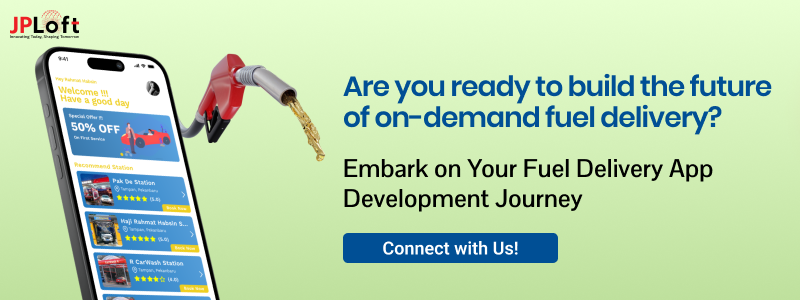
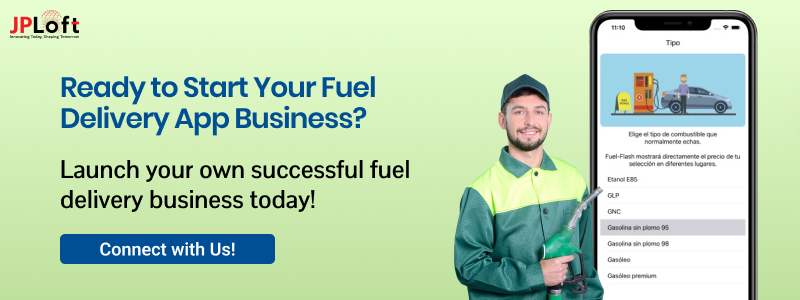

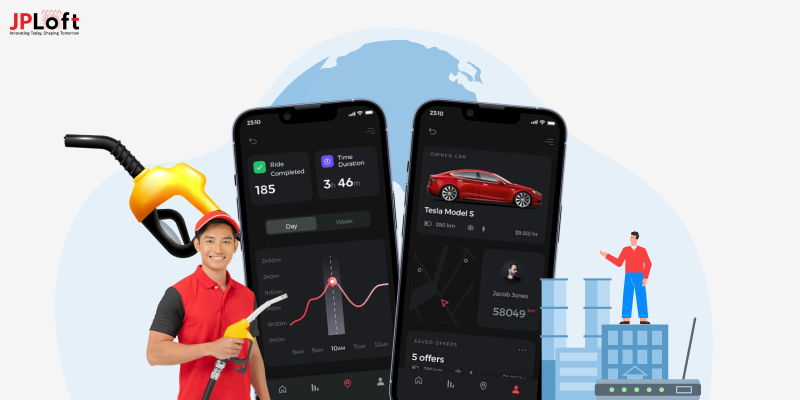
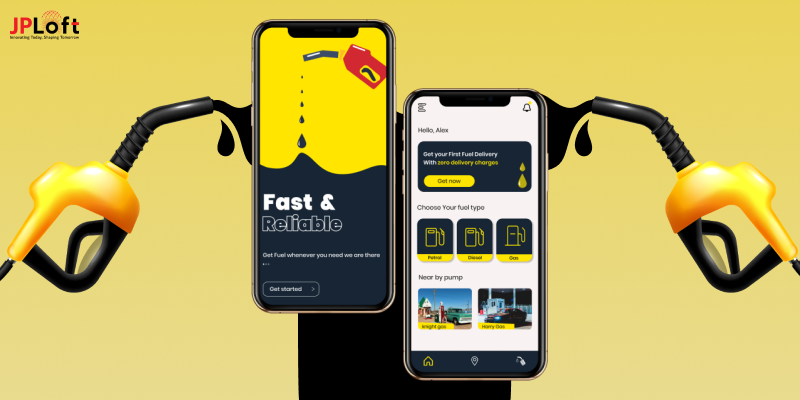
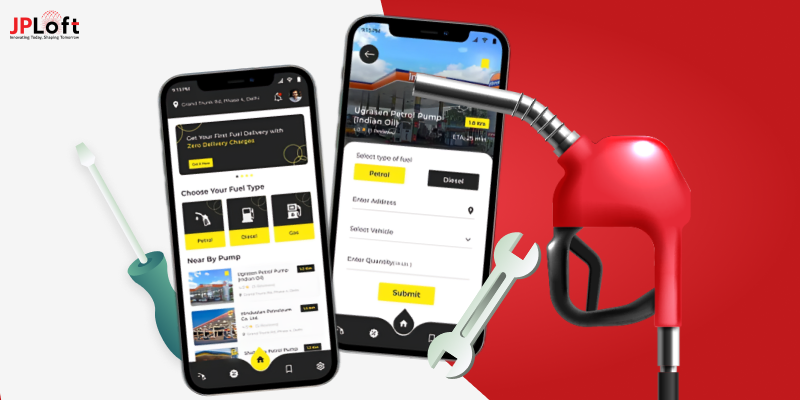



Share this blog